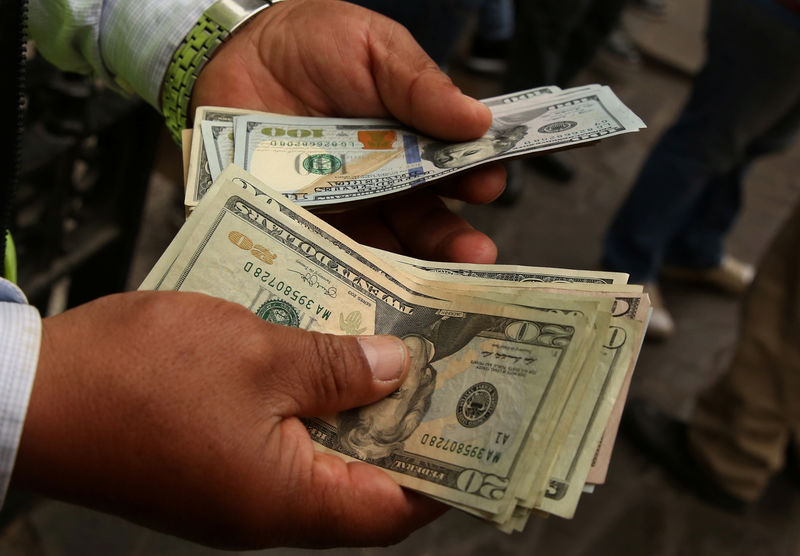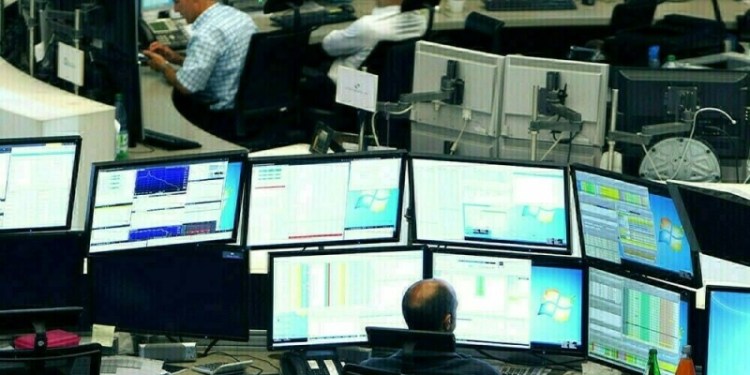 © Reuters. A money changer holds U.S. dollar bills at a street in downtown Lima
© Reuters. A money changer holds U.S. dollar bills at a street in downtown LimaBy Shinichi Saoshiro
TOKYO (Reuters) – The dollar wallowed near a one-month low against a basket of currencies on Friday, while commodity currencies such as the Australian and Canadian dollars were at two-month highs thanks to firmer energy and metals prices.
The against a basket of six major currencies () was unchanged at 92.602 after slipping 0.4 percent overnight to 92.573, its lowest since Nov. 27.
The index was on track to lose 0.5 percent this month.
Shin Kadota, senior strategist at Barclays (LON:) in Tokyo, said rebalancing of positions by market participants signaled broad selling of the dollar, particularly the yen, toward the year’s end.
“Seasonal trends in the currency market have shown that the dollar tends to weaken after Christmas through the first few days of the following year before eventually being bought back again,” he said.
Many institutional investors close their books at the year-end, a deadline for taxation and performance reporting, a time seen leading to dollar selling pressure.
The dollar index will likely end the year down more than 9 percent, its worst showing since 2003, and a Reuters poll showed it is expected to lose a bit more ground against other major currencies next year.
The dollar sagged in 2017 although the U.S. economy expanded, the Federal Reserve tightened monetary policy and the United States enacted a major overhaul of its tax code.
Tensions stemming from the Korean Peninsula, the Russian scandal dogging U.S. President Donald Trump’s election campaign, and low U.S. inflation were some of the factors that shackled the dollar in 2017 and expected to continue weighing on the currency in 2018.
“The Fed and European Central Bank are poised to normalize policies in 2018 but due to limited inflation concerns, volatility in currencies is likely to be curbed,” wrote strategists at Sumitomo Mitsui Asset Management.
“But geopolitical risks linked to North Korea and the Middle East and political risks posed by Brexit negotiations and the U.S. midterm elections bear watching in 2018.”
The dollar was 0.1 pct lower at 112.735 yen
The euro was steady at $1.1947
The common currency showed little immediate reaction to Italy’s announcement that it will hold an election on March 4, as such an outcome had been anticipated. The poll is expected to produce a hung parliament and possibly some market turbulence in the euro zone’s third-largest economy.
In addition to political factors such as the Italian election in March, a key factor for the euro in 2018 is how the European Central Bank proceeds with curtailing its massive monetary stimulus.
The euro has risen 13.5 percent this year, its strongest annual gain since 2013. It was lifted by factors including relief over the French elections and expectations for the ECB to normalize monetary policy while taking in stride political developments in Germany and Spain.
The Australian dollar was effectively flat at $0.7795
The was headed for a 3 percent monthly gain, lifted by a rise in the prices of commodities like iron ore and .
The Canadian dollar extended its overnight rally to touch C$1.2555
The was on track to gain 2.5 percent in December, boosted by a surge in prices.
The New Zealand dollar edged up to $0.7099
was last up 3.2 percent at $14,908.44 () on the Bitstamp exchange having sunk 6 percent on Thursday. It was off the record highs near $20,000 touched 12 days ago but still headed for a gain of roughly 1,400 percent in 2017.
Source: Investing.com




























